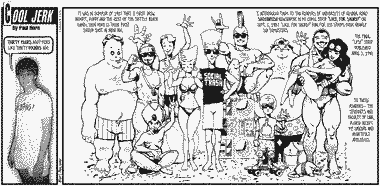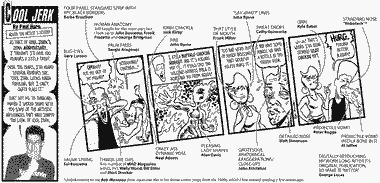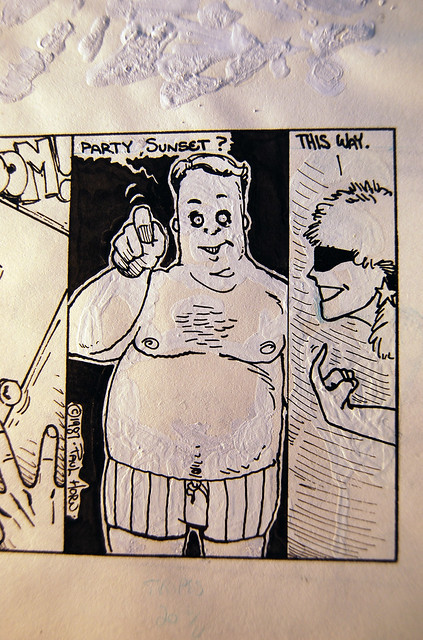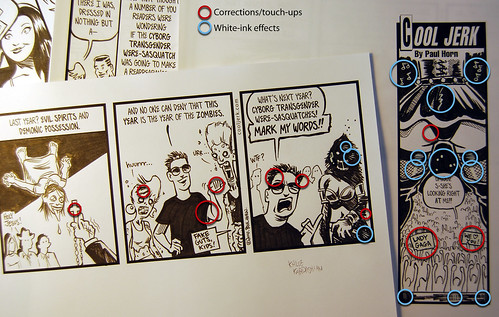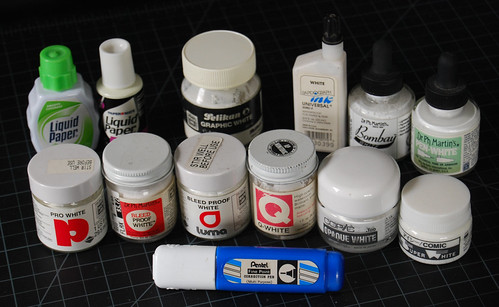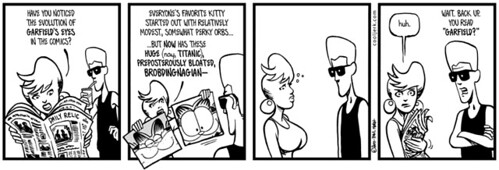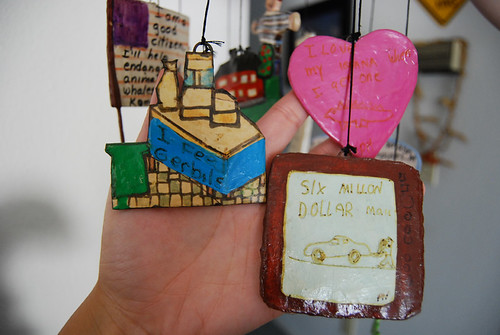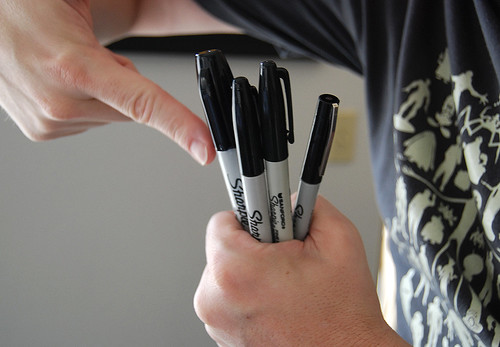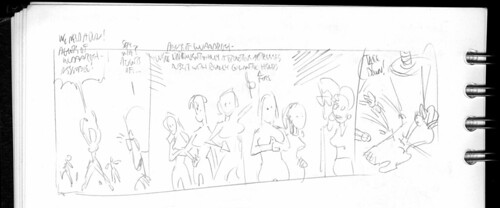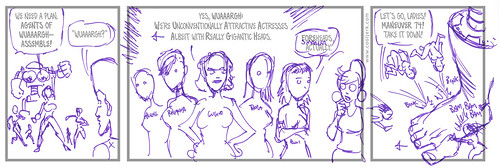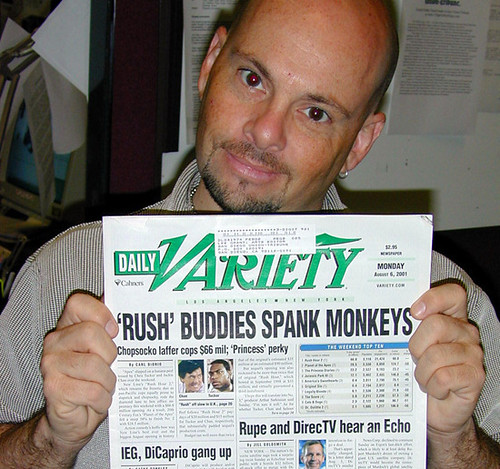
Circa 2001 (IIRC, monkeys were huge that year)
I hope you’ve been enjoying this series of strips (start here) centering on Manuel Dexterity. I’d been planning this tale for many years, patiently waiting until the right time. It’s been my intent all along, having Manuel be gay. In fact, as you look back from his debut in Hodabeast through to the present day, you’ll see that he’s always stayed true to my vision. That’s about 16 years of character development.
Has it really been 16 years? In that time, we’ve known Manuel to be a freelance special-effects artist, a good friend of Puppy’s and Manhattan’s, he’s Hispanic and barely bilingual, he saved Spittle Beach from Comic Sans, he’s had porno dreams about Anthony Bourdain, he was devoured by DeeDee’s temporarily gigantic ass, he paints nudes, he created a TV pilot that NBC swiped and turned into “Heroes” and knows how to do the Wild Boys dance. He’s an important part of Cool Jerk and I refuse to make him “the token gay.”
The last thing I wanted was to screw up Manuel’s day in the spotlight, as it were. Manuel needed a voice that wasn’t mine. So, I enlisted my friend David Poller to help plot and co-write this series. David should be a familiar name to long-time readers— he’s been subtly improving my sense of humor over the years by influencing punchlines (see the Mary Annibal the Cannibal on Gilligan’s Island strips) or just killing me with laugh-out-loud conversations (the peeps strips). He’s even on the back cover of Bimboozled.
David is many things: He’s a professional photographer and photo editor. His appetite for pop culture is insatiable. He’s a snarky socio-political commentator. He’s well-traveled. He’s a Cubs fan. He’s a teacher. He’s lived in — literally — three of the four farthest corners of the continental United States. He’s a mentor. He’s hilarious. He’s brilliant. He’s a good friend. He’s gay. No single one of these traits defines David as a person. And thusly, I —we— didn’t want Manuel to be defined solely by his orientation.
Next week is the double-sized finale, and after that an epilogue strip. By my count, that’s 10 strips in this series (plus the bingo card). David wrote/co-wrote nine of them. Can you guess which one was all mine??






